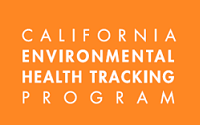Taking steps to provide a built environment that
promotes physical activity, increases access to nutritious food
and reduces exposure to safety risks and environmental hazards
benefits all segments of the community. However, specific subsets
of the general population may be especially vulnerable to
particular health effects and may benefit most from certain
actions. Conducting an initial health assessment to determine
community needs and trends constitutes an important first step in
understanding their needs.
For example, young people have particularly high rates of
overweight and obesity compared with adults.65 Similarly, residents in
predominantly low-income communities may have less access to
fresh, healthy food.66
Determining the most important health concerns within the
community may not be obvious. There are a number of ways that
local officials can gather information to assess health needs and
trends. Potential sources of information include:
- Local public health officers and health departments
- State and federal health agencies, such as the California
Department of Public Health and the Centers for Disease Control
- Local universities, including university medical research
centers
- Local hospitals, clinics and associations of health
professionals
- Community-based organizations working on health issues
 Menu
Menu

